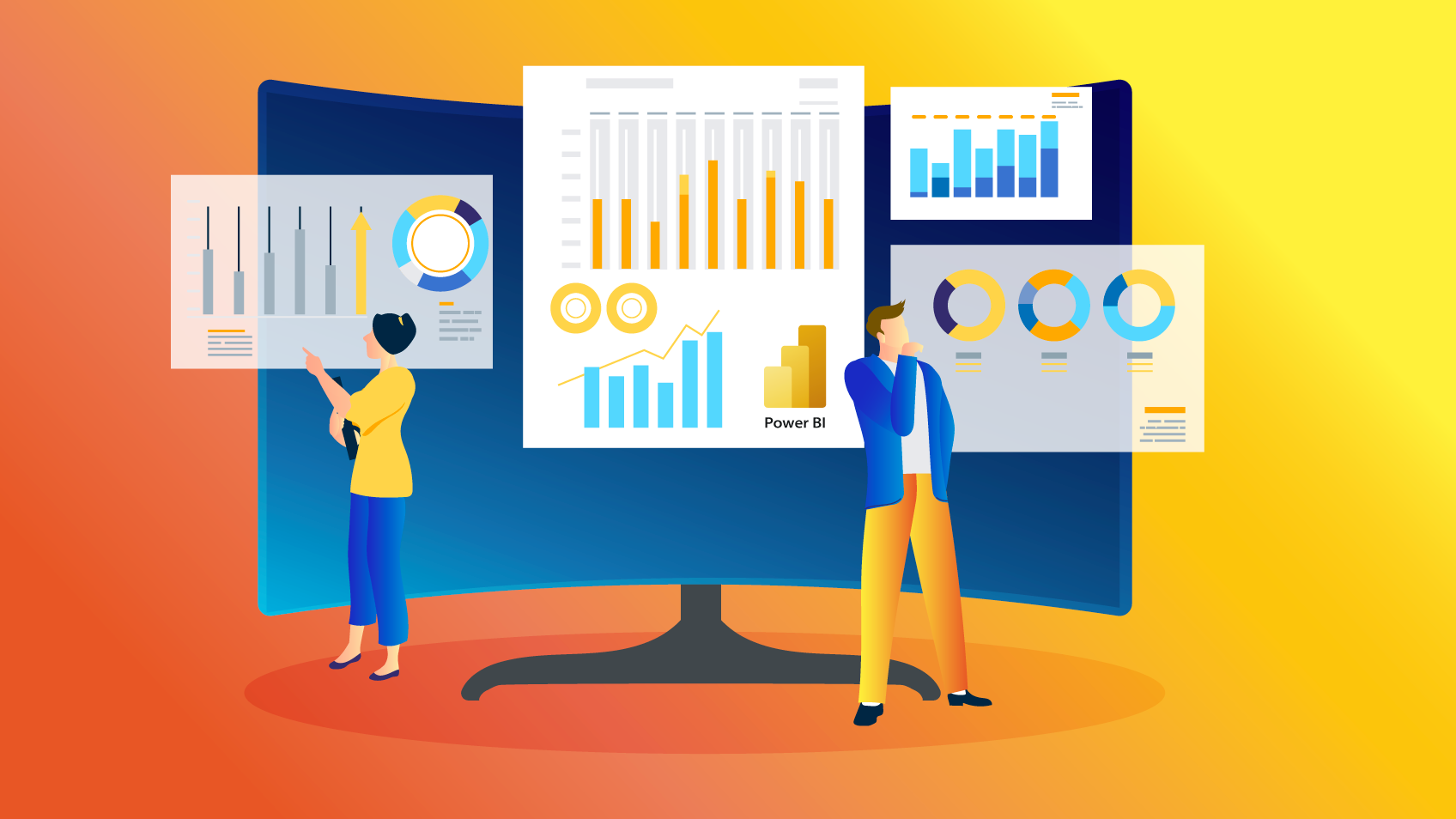In today’s competitive business environment data is a crucial asset that can either make or break an organization. Power BI and Microsoft Fabric are powerful tools that companies make use of to maximize the value of data. These platforms form the basis of business intelligence. And when combined with Azure Data Factory, they transform into a formidable force in data analysis and decision-making.

Power BI: Your Business Intelligence Companion
Power BI by Microsoft is a powerful business intelligence tool which allows businesses to display and communicate their information. It empowers users to create interactive reports and dashboards by transforming data from raw into actionable insights.
Whether you’re a small startup or a large enterprise, Power BI adapts to your needs. Power BI is a seamless integration of many data sources and makes it easy to consolidate information from different platforms and databases. Even non-technical users can use it to create reports quickly and analyses with its intuitive drag-and drop interface.
Power BI’s platform enables real-time data processing. This means that you’re working with current information. It has a broad range of visualisations, which allows you to display data in a palatable and engaging way. Collaboration and sharing reports with coworkers improves decision-making and creates a data-driven culture in your organization.
Microsoft Fabric Weaving Data Excellence
Microsoft Fabric is an underpinning framework which connects and orchestrates the data from various Microsoft services. It is the fabric that turns your data into an easily accessible and reusable entity. This enables businesses to gain insight fast.
Microsoft Fabric helps businesses maintain data integrity and consistency as they work with growing numbers of data. It works with a variety of services, ranging from Azure Data Lake Storage and Azure SQL Data Warehouse, to Power BI and more. The interconnectedness of the platform will ensure that data flows and insights are available across multiple sources.
The flexibility of Microsoft Fabric is apparent in its capabilities to transform data. It can be used to manage data, prepare it for analysis and to ensure that it is adhering to the data governance policies of your business. Microsoft Fabric is an application framework that can help ensure your data is correct and reliable for analytics.
Azure Data Factory – The Gateway to Data Transformation
Azure Data Factory is another essential component in the modern business intelligence ecosystem. It’s a cloud-based data integration service that lets you build, plan and manage workflows that are based on data. By orchestrating data movement as well as transform data, Azure Data Factory paves the way for valuable insights.
One of the major advantages of Azure Data Factory is its flexibility in connecting to various data sources. No matter if your data is located on-premises or in the cloud, it can be seamlessly integrated so that you can have an overall view of your data ecosystem. It supports batch processing, streaming of data in real-time, and big analysis of data. This makes it ideal for various use instances.
Azure Data Factory offers a visual interface that simplifies the design of data pipelines. Even if you are not a programer, it’s simple to create the schedule, monitor and control of data pipelines. Users can be in control of data integration and self-service data preparation.
The Power Trio: Power BI, Microsoft Fabric, and Azure Data Factory
When Power BI and Azure Data Factory is combined to create powerful three-in-one that will enhance your data analysis capabilities. How do they work together?
1. Data Integration: Azure Data Factory is able to connect with a variety of data sources. This makes sure that all of your data are accessible. Microsoft Fabric orchestrates the data from various services using the data integration capabilities. This means that your data is structured clean and is ready for analysis in Power BI.
2. Microsoft Fabric’s Data Transformation feature is essential for achieving your analytics needs. Whether it’s data wrangling, cleaning, or even transforming the data, the fabric will ensure that the data is in good shape to yield meaningful information.
3. Power BI is able to be a part of your data after it is analyzed and refined. Power BI allows you to make visually appealing reports and dashboards that make complicated data understandable. You can then share these insights with your team members, fostering data-driven decision-making.
4. Scalability: Azure Data Factory scales seamlessly to handle growing data volumes. The combination of Power BI and Microsoft Fabric ensures that your data stays stable and reliable as your business expands.
5. Power BI and Azure Data Factory provide real-time data, which can be crucial for making fast-moving decisions.
You can also read our conclusion.
The world of business intelligence is rapidly changing, and to stay competitive, companies must harness the power of data efficiently. Power BI, Microsoft Fabric and Azure Data Factory are a powerful trio that will aid you in taking your business intelligence to new heights. If you’re looking to build amazing visualizations, maintain data consistency, or streamline data workflows, this set will meet your needs. Embrace the power of business intelligence and make the most of your data.
